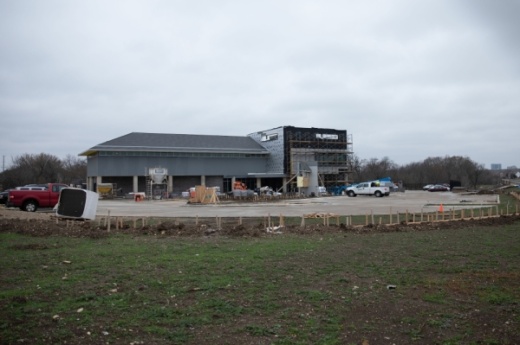An estimated 26,000 more people call Plano home than did a decade ago, which has pushed the two departments to grapple with greater density and an aging population.
“There are more calls we are seeing ... in an increasing population, but also it’s what the characteristics of that population are that drive a lot of how our public safety responds,” City Manager Mark Israelson said.
When it comes to preparing for changes, data is the foundation of each department’s decisions, Israelson said. Data guides staffing adjustments and assesses how well each department is working, ensuring Plano has the right amount of first responders and that they get where they need to be in an emergency.
New facilities, which have been in the works since the mid-2010s, are a result of that effort. A new police substation will be completed this spring, and construction will start in late spring or early summer on a fire training center set to open the summer of 2021. Funding for the $15 million training center and the $10.9 million station came from the city’s 2017 bond referendum.
‘Need to be embedded’
The substation being built at the southwest intersection of McDermott Road and Robinson Road will add much-needed space for the police department, according to police spokesperson David Tilley.
The roughly 23,000-square-foot building will replace the less-than-5,000-square-foot space attached to Fire Station No. 7 along Democracy Drive, near Tennyson Parkway and the Dallas North Tollway. The empty facility will be used as a warehouse for city facilities management, according to Marlin Price, the department’s administrative services manager.
Plano police divide the city into four sectors, or areas, where police are assigned, each of which are split up with multiple beats, or smaller designated coverage zones. New beats will likely be added to western Plano as need grows, Price said, and the new station will allow for the creation of an additional sector in the future.
The department operates out of three main stations: the downtown headquarters, a joint-use facility along Independence Parkway, and the Democracy Drive station. Smaller stations, like the substation located at The Shops at Legacy, support larger stations.
“You can’t have just one large facility in a city this size because of windshield time—driving back and forth,” said Greg Rushin, Plano deputy city manager and former police chief. “You need to be embedded in the areas of the communities where it would make sense.”
The new station will give more space to those at the Democracy Drive station and will allow a few operations, such as traffic control and quartermaster staff, to relocate there, which will open up space in the downtown station, Price said.
In 2011, average response times for Priority 1 calls, or calls with an immediate threat to life, reached a decade high of 4 minutes and 56 seconds. That is a full minute slower than the department’s 2019 average, but still met the department’s longstanding goal for responding to Priority 1 calls at an average of under 5 minutes. At times, officers were covering more than one beat, Tilley said of his time on duty.
In response, the department changed from eight-hour to 12-hour shifts, which provides relief from duty rotation issues, such as training, sickness and vacation.
The department has also added staff in a variety of roles since 2011, including traffic control and neighborhood, or “boots on the ground,” officers, Tilley said. Additions like these were made in anticipation of growth in population and density.
The police force now grows in accordance with results from a monthly computerized assessment system, according to the department. The system analyzes response times, the amount of time each officer spends on cases and other factors. The analysis is key for planning because it takes nearly two years to hire, train and place an officer on duty, Tilley said.
Training for new challenges
Plano Fire-Rescue built Fire Stations Nos. 12 and 13 in the late 2000s in anticipation of growth in west Plano. The department then decided to move existing responders and fire trucks from Stations Nos. 2 and 8 to the new locations, providing the 15 responders and one truck needed at each station.
This was a response to the city’s loss of revenue following the Great Recession, said Fire Chief Sam Greif, who joined the department in 2015.
The additional personnel were not initially needed, Greif said, but this staffing level continued into the mid-2010s when the shortage began to make a real impact on response times.
In late 2016, the city approved adding 30 responders and the necessary equipment to re-establish Stations Nos. 2, 8, 12 and 13. By 2017, they were fully operational. Plano Fire-Rescue began to see a drop in response times and maintained its Insurance Services Office, Commission of Fire and its Ambulance Services accreditations.
Now, the department anticipates having a state-of-the-art fire training center built to represent the challenges responders will face in Plano, according to Greif. This will include six stories above ground, with each level representing a different environment, such as an office building or an apartment, as well as a basement level, Israelson said. It will also have a section built to reflect a technical rescue from a partially collapsed building.
The department began seeing more high-rise emergencies over the past decade, Greif said, and has used training centers in neighboring cities. This creates potential challenges for response times if an emergency were to happen during training, Greif said. Sending a company from McKinney to Plano could take upwards of 45 minutes with traffic, he said.
“There’s a human behind that response time; there’s somebody who’s had a major event in their life, and it’s an emergency,” Greif said. “They need help, and they need it right away.”





